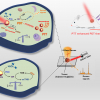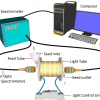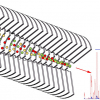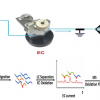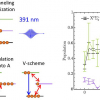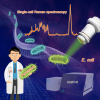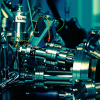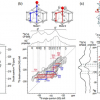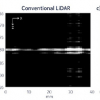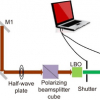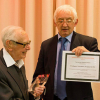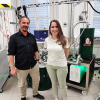Spectroscopy News
The use of SERS to monitor the photodynamic therapy process of tumours enables understanding of the specific mechanism of the catalytic process of nanozymes.
A high-throughput single-grain quality NIR detection platform has helped evaluate the eating quality of hybrid rice.
A novel focusing quadrupole ion funnel takes advantage of RF ion focusing technology in proton transfer reaction mass spectrometry and greatly improves its sensitivity.
Liquid chromatography-mass spectrometry and an electrochemical flow cell could spark a “paradigm shift” in biopharmaceuticals testing.
Femtosecond soft X-ray spectroscopy has been used to understand lasing in the forward direction in air upon focusing intense femtosecond light pulses.
Raman spectroscopy identifies E. coli persisters at single-cell level and reveals their metabolic activity.
Using ultralow-energy secondary-ion mass spectrometry, researchers are getting a fresh look at MXenes and MAX phases.
A new review summarises the recent advances in ssNMR of zeolite catalysts, mainly covering the new applications of ssNMR to investigate zeolite framework structure, catalytically active sites, intermolecular interactions and catalytic reaction mechanisms.
Combines photothermal spectroscopy and lidar, resolving chemical information by detecting sub-nm surface deformations due to photothermal absorption of a pump laser.
New method combines zero- to ultralow-field nuclear magnetic resonance with the SABRE-Relay hyperpolarisation technique.
Label-free trace detection of bio-molecules by liquid-interface assisted surface-enhanced Raman scattering has been realised using a microfluidic chip.
AgroCares are to use trinamiX’s handheld NIR spectrometer in their next Nutrient Scanner solution.
A new method to detect Parkinson’s disease has been determined by analysing sebum with paper spray mass spectrometry.
Two-photon-polymerisation lithography structures examined via Raman spectroscopy and nanoindentation.
Nominations for the IRDG’s 2022 Norman Sheppard Award are invited.
A new Open Access paper in JSI—Journal of Spectral Imaging compares common factor-based methods for hyperspectral image exploration: PCA, MAF, MNF and MDF.
Professor Kerry Walsh is to receive the prestigious ANISG Tony Blakeney Award for 2022.
An NMR method enhanced by a very powerful amplifier, in combination with molecular dynamics simulation, enables the detection and accurate characterisation of proteins at physiological concentrations.
ACD/Labs has joined the Tetra Partner Network which helps pharma and biopharma customers achieve greater scientific insights and outcomes.

